This is the 23rd post in a series of Nikon D850 tests. The series starts here.
I’m going to be doing some autofocus and vibration testing using the D850 and the Nikon 200 mm f/2 G VR lens. It’s the first generation VR lens, not the current one, but it’s still pretty sharp. In order to get a baseline for what is to come, I tested the lens for on-axis sharpness with a moderate-contrast target at 5 meters. I used the D850’s Focus Shift Shooting feature for focus bracketing, and made exposures at the whole stops from f/2 through f/8.
Here’s the target I used:
It’s an inkjet-printed target, and not the sharpest thing around, but I think it’ll be sharp enough for the uses I have in mind for the 200/2.
Here are the results for f/2:
The vertical axis is MTF50, measured in cycles per picture height (cy/ph). The shot taken with the lens focused to the closest position is on the left. There are 7 more exposures plotted. There is no way to know the focused distance for these exposures. I used the minimum step size for the Focus Shift Shooting feature, which is too large to reliable catch the actual peaks, but it’s not that bad. The main thing to notice here is the almost complete lack of longitudinal chromatic aberration (LoCA). The peaks of the three raw channels almost line up perfectly!
The rest of the f-stops:
F/4 is the sharpest stop on axis.
f/5.6 is just about as good.
Now diffraction is starting to set in.
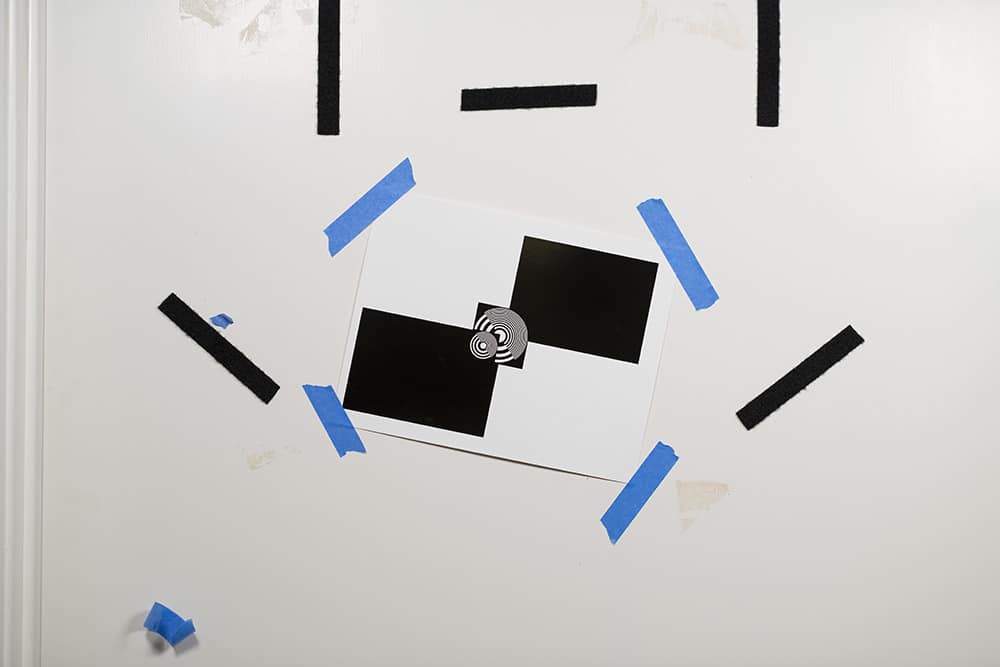
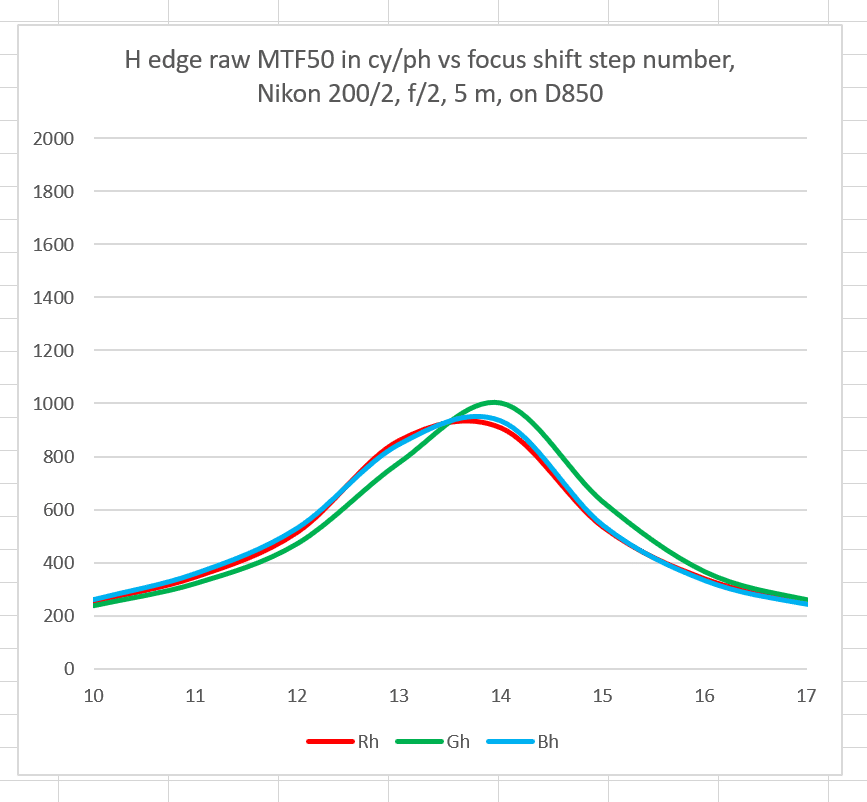
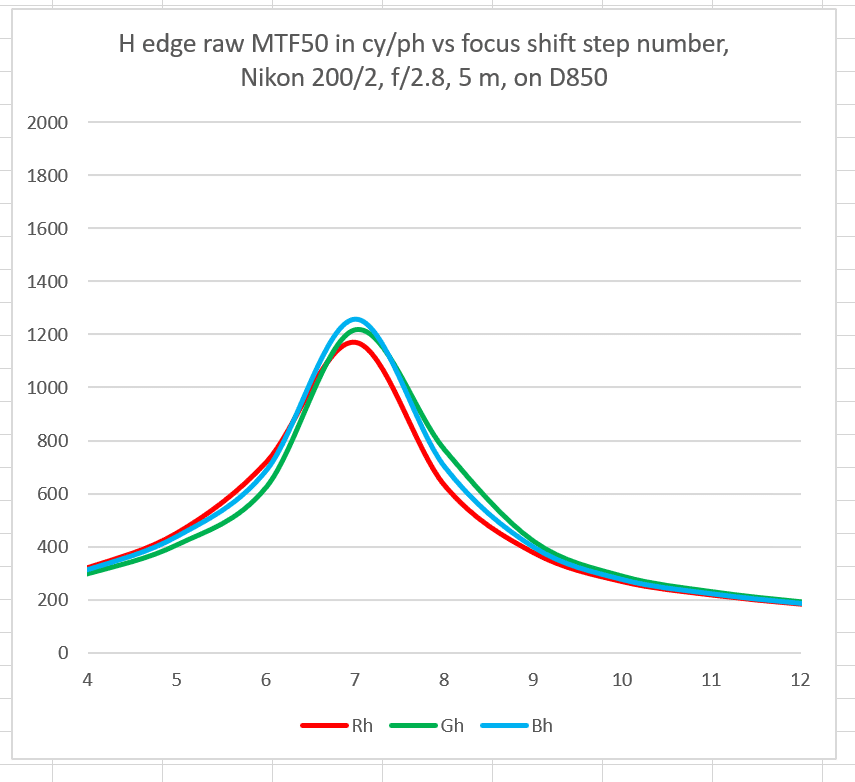
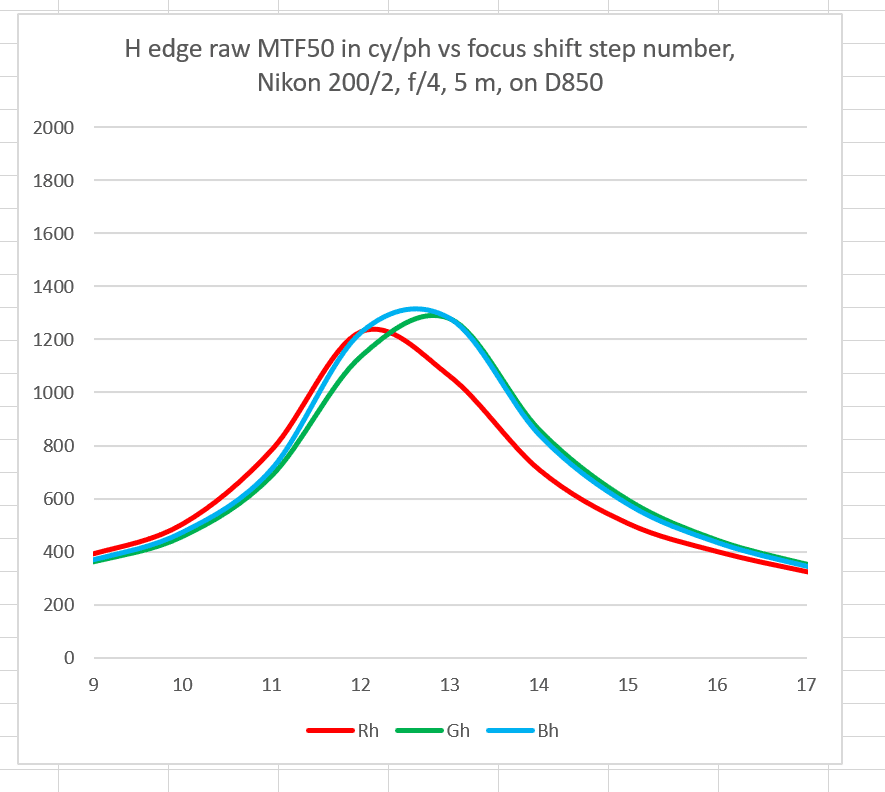
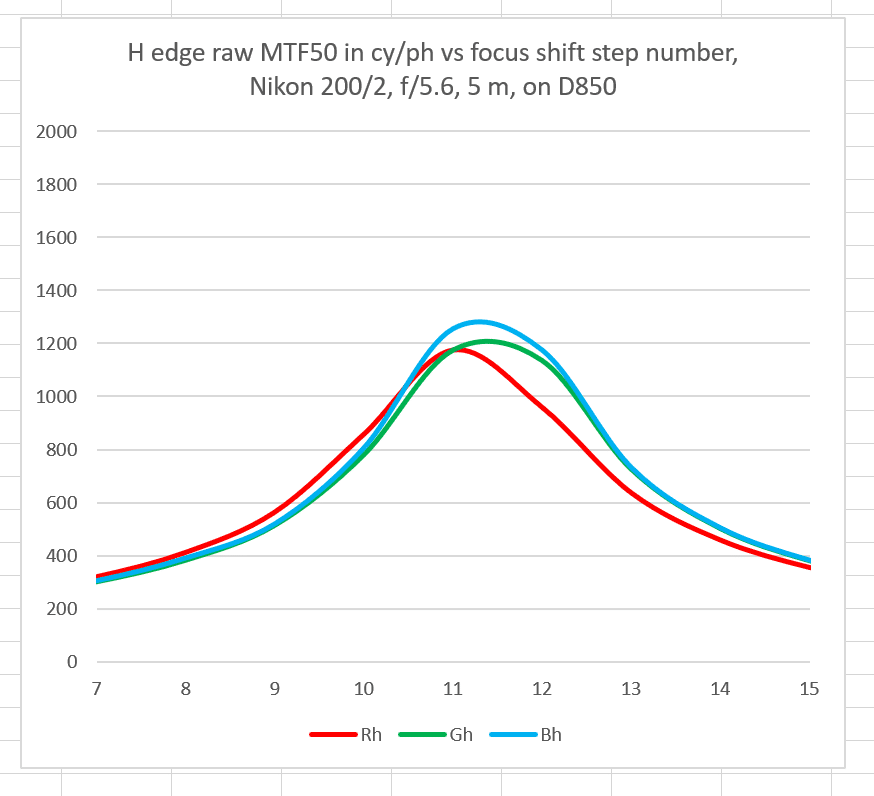
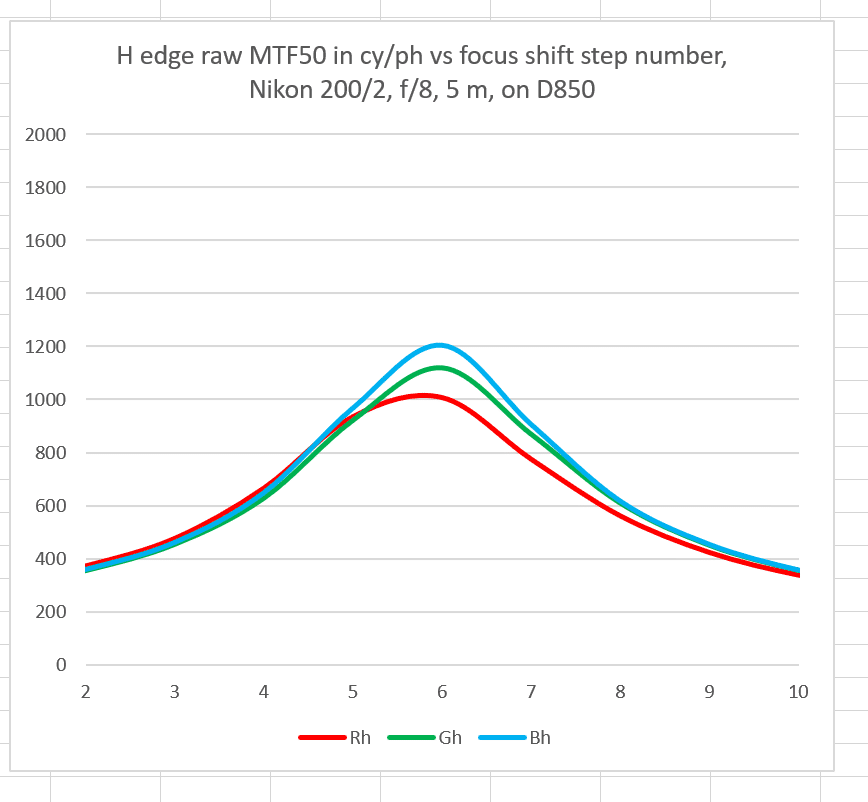
Leave a Reply